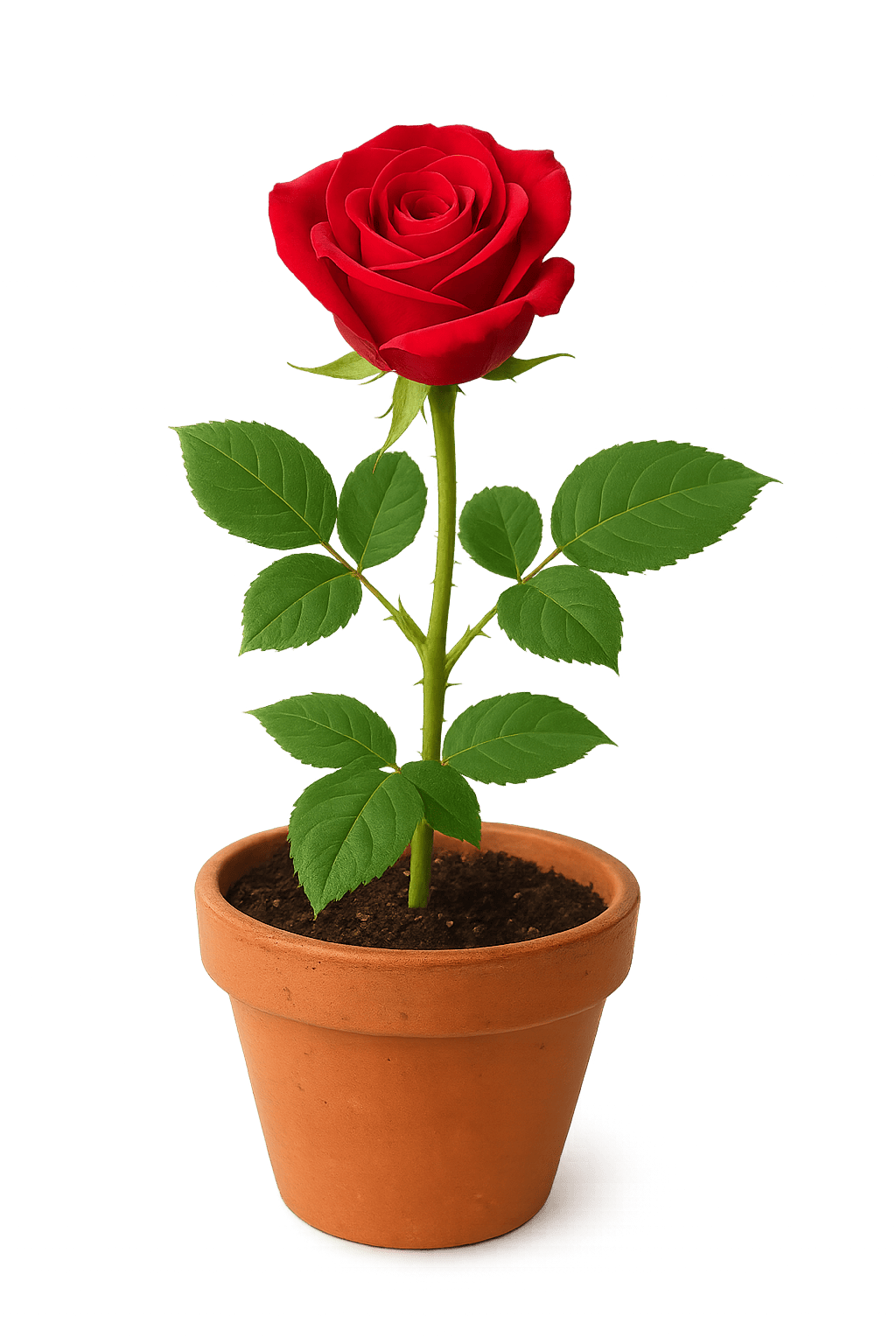Rose
Rose Detailed Encyclopedia Introduction
Rose is one of the most popular flowers in the world, symbolizing love and beauty, requiring careful care to bloom beautifully.

Basic Info
Family:Rosaceae
Scientific Name:Rosa
Origin:Asia, Europe, North America
Flowering Period:Spring to Autumn
Height:0.5-3 meters
Lifespan:Perennial
Morphology
Leaves:Pinnately compound leaves, oval leaflets with serrated margins
Flowers:Double or single petals, 5 petals, rich colors
Roots:Deep root system, well-developed taproot
Stem:Erect or climbing, thorny
Growth Habits
Soil Requirements:Well-drained fertile soil
Watering Needs:Keep soil moist, avoid waterlogging
Light Requirements:Requires ample sunlight, more than 6 hours daily
Temperature Requirements:15-25°C, strong cold resistance
Classification & Varieties
Main Classifications
Ornamental Varieties
Professional Care
✂️ Pruning Management
Pruning Timing:Winter dormancy period (Dec-Feb) and after flowering
Pruning Method:45-degree angled cut, retain 3-5 buds
Pruning Purpose:Promote new branch growth, control plant shape, increase flowering
Required Tools:Sharp pruning shears, gloves, disinfectant
🛡️ Pest & Disease Management
Common Pests:
Common Diseases:
Prevention Measures:Maintain ventilation, avoid waterlogging, regularly check leaves
Treatment Methods:Biological control, chemical agents, prune diseased branches
🌱 Fertilization Management
Fertilizer Type:Organic fertilizer, compound fertilizer, foliar fertilizer
Fertilization Frequency:Once a month during growing season, increase phosphorus before flowering
Fertilization Timing:Spring budding period, after flowering, autumn
Fertilization Amount:According to plant size, 50-100 grams per plant
💧 Water Requirements
Watering Frequency:Daily in summer, every 2-3 days in spring/autumn, weekly in winter
Watering Amount:Water thoroughly each time, keep soil moist but not waterlogged
Watering Method:Water at the roots, avoid wetting leaves
Dehydration Signs:Wilting leaves, dry soil, new shoots stop growing
Basic Care Tips
- •Requires at least 6 hours of direct sunlight daily
- •Keep soil moist but well-drained
- •Prune regularly to encourage new growth
- •Fertilize monthly, increase phosphorus before flowering
- •Watch out for pests and diseases, especially black spot and aphids
Ecology Value
Pollinators:Bees, butterflies, birds
Wildlife:Provides food and habitat for various insects
Environmental Value:Purifies air, beautifies environment
Cultural Symbolism
Symbolic Meaning:Symbol of love, beauty, and romance
Historical Background:Over 3000 years of cultivation history
Related Festivals:Important flowers for Valentine's Day and Mother's Day
Artistic Expression:Classic theme in literature, painting, and music